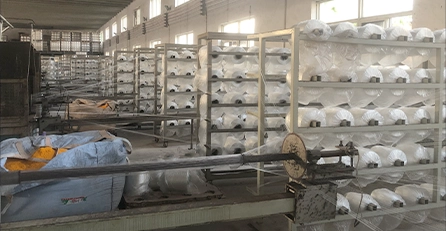vacuum hose
Understanding Vacuum Hoses Essential Components for Efficient Systems
Vacuum hoses play a crucial role in various applications, ranging from industrial processes to everyday household tasks. These flexible tubes are designed to transport air or fluids under vacuum pressure, making them essential for systems that rely on suction or atmospheric pressure differences to function effectively. Understanding the properties and applications of vacuum hoses can significantly enhance both performance and longevity in specific tasks.
Material and Design
Vacuum hoses are typically made from a variety of materials, including rubber, plastic, and silicone, each offering unique advantages. Rubber hoses are favored for their durability and ability to withstand a range of temperatures, making them suitable for heavy-duty applications. Plastic hoses, on the other hand, are lightweight and more resistant to certain chemicals, making them ideal for tasks that involve corrosive substances. Silicone hoses offer excellent flexibility and a remarkable temperature range, which is perfect for automotive and laboratory settings.
The design of a vacuum hose is also critical to its performance. Smooth inner surfaces reduce friction and improve airflow, while reinforced structures provide additional strength and prevent collapse under pressure. Many vacuum hoses also come with varying diameters, catering to specific applications, ensuring optimal suction power and efficiency.
Applications
The applications of vacuum hoses are vast and varied. In industrial settings, they are commonly used in material handling, dust collection, and manufacturing processes where the removal of particulates is necessary. For instance, vacuum hoses are essential in woodworking industries to collect sawdust and debris, promoting a safer and cleaner working environment.
vacuum hose

In the automotive world, vacuum hoses are integral to engine performance
. They are used in various systems, including brakes, fuel evaporation, and emissions control. Any cracks or leaks in these hoses can lead to inefficient engine performance, reduced fuel economy, and increased emissions, highlighting the importance of regular inspection and maintenance.In household applications, vacuum hoses are found in vacuum cleaners, where they carry dirt and debris into the collector. The efficiency of a vacuum cleaner often depends on the condition of its vacuum hoses; blockages or leaks can severely diminish suction power.
Maintenance and Care
Proper maintenance of vacuum hoses is paramount to ensure their longevity and functionality. Regular inspections for cracks, wear, and blockages are essential. If any damage is detected, timely replacement is necessary to prevent further system malfunctions. Cleaning vacuum hoses regularly helps avoid buildup that can hinder airflow. Additionally, using the appropriate hose for specific applications can prevent undue wear and tear.
Conclusion
Vacuum hoses are indispensable components in a wide range of applications, from industrial processes to everyday household use. Understanding their materials, designs, and proper maintenance can lead to improved system efficiency and reliability. Whether in a workshop, garage, or when cleaning at home, the significance of these hoses cannot be overstated, as they contribute to the overall effectiveness of the task at hand. By prioritizing the care and inspection of vacuum hoses, users can help ensure the optimal performance of their systems for years to come.
-
Top Quality Oxy Acetylene Hoses for Sale Fit for Welding DemandsNewsJul.28,2025
-
The Future of Pneumatic Air Tubes in IndustryNewsJul.28,2025
-
Superior and Reliable LPG Hose Pipe Solutions for Every NeedNewsJul.28,2025
-
Exceptionally Durable and Versatile Premium Braided PVC TubingNewsJul.28,2025
-
Best Adapters for Connecting Garden Hose to PVC Pipe ConnectionsNewsJul.28,2025
-
The Essential Role of LPG Hoses in Safe and Efficient Gas DistributionNewsJul.16,2025














